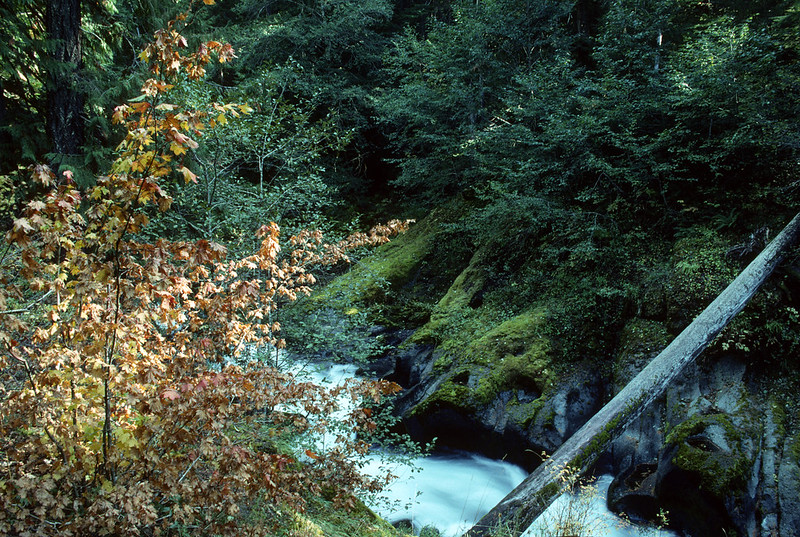Sept. 2022 Science Corner | Wildfire controls on evapotranspiration in California’s Sierra Nevada


Forest restoration is increasingly recognized as a way to not only decrease fire risk in the western U.S., but also enhance the numerous additional benefits that healthy and resilient forests provide to communities. However, funding and capacity limitations constrain the amount of restoration that can be accomplished, and quantifying the enhanced benefits of restored forests is critical for attracting needed investment in forest restoration projects.
Authors: Qin Ma, Roger C. Bales, Joseph Rungee, Martha H. Conklin, Brandon M. Collins,
Michael L. Goulden
Written by: Kirsten Hodgson, Project Associate
Forest restoration is increasingly recognized as a way to not only decrease fire risk in the western U.S., but also enhance the numerous additional benefits that healthy and resilient forests provide to communities. However, funding and capacity limitations constrain the amount of restoration that can be accomplished, and quantifying the enhanced benefits of restored forests is critical for attracting needed investment in forest restoration projects. Since these benefits are specific to different geographies, sufficient data to accurately quantify these ecosystem services is not always available. However, a 2020 study from researchers at UC Merced’s Sierra Nevada Research Institute has laid the groundwork for quantification of enhanced water benefits in California’s Sierra Nevada.
In the study, lead author Qin Ma and her team identified changes in evapotranspiration–the movement of water from land to the atmosphere through evaporation from land surfaces and transpiration from plants–after fire in the Sierra Nevada and Southern Cascade Range over more than 30 years, relying on data from satellite imagery plus direct measurements of evapotranspiration at eddy-covariance flux towers. These data allowed the study team to track evapotranspiration over the years following a fire, creating a fuller picture of the long-term impacts of fire on the landscape’s water balance.
The results show that forest restoration and reintroduction of fire in California’s Sierra Nevada will have downstream water benefits due to decreased evapotranspiration. When evapotranspiration decreases, less water is lost to the atmosphere, leaving more available on the landscape to ultimately collect in reservoirs for use by communities. The magnitude of this decrease in evapotranspiration is strongly correlated with fire severity and the density of vegetation pre-fire, and effects can last 15 or more years, with evapotranspiration gradually returning to its pre-fire levels over time.
For organizations like Blue Forest working to identify downstream benefits to motivate forest restoration, this study presents quantitative evidence of the impact on water availability and a framework for quantifying the potential benefits of restoration in specific locations. Concrete, quantified estimates of changed water availability can be translated into economic value and help to motivate outside investment in forest restoration by groups who rely on these stable and abundant water resources.
The study also projects the potential impact of future fire dynamics on evapotranspiration across the Sierra Nevada, finding that reduction in evapotranspiration is correlated with fire severity–the magnitude of the effects of a fire on above- and below-ground vegetation. While the biggest increase in available water would consequently arise from large-scale, severe burning, the authors caution that trade-offs exist between these potential water benefits and the safety of human and animal communities as well as other important forest benefits like carbon sequestration and erosion prevention. In contrast, moderate burning or equivalent forest thinning is linked to a 9% decrease in evapotranspiration and subsequently to an increased water supply with a lower risk of detrimental ecological impacts. In a press release about the study, lead author Ma says, “Understanding how water use in forests has changed after disturbances in the past can help us predict how forests — and the water supply they provide — will respond to comparable management actions such as thinning or the reintroduction of low-intensity fire in the future.” These differential impacts can guide land managers when developing treatment plans on forested lands.
As Blue Forest continues to explore the value of the FRB for improving ecosystem processes and services such as water availability, understanding the impact of burning at different severities or thinning at different densities provides a more concrete view of the real water benefits of restoration, as well as caution about the pitfalls of considering water benefits alone. Forest restoration for ecological protection and resilience will continue to be the primary goal of land management activities, with increased water supply a key co-benefit of achieving that central goal.